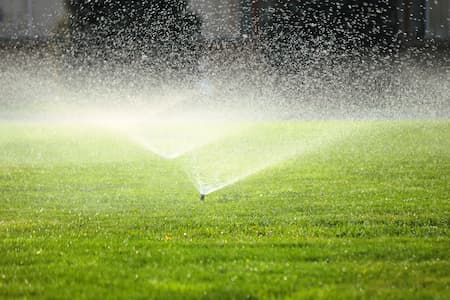Landscape Irrigation - Water Conservation for the Gardener

People often tend to think of landscape irrigation and water conservation as being necessary only in the dry, arid areas of the country, but the truth of the matter is that responsible use of water should be a priority for everyone.
Water may seem to be abundant, but in reality it is a limited resource because although water covers the majority of the earth's surface, less than 1 percent is appropriate for human use. The rest consists of salt water in the oceans, water frozen in the polar ice caps, or in locations too remote to be of practical use. And while the world population continues to grow, requiring increasing amounts of water, the available supply remains constant.
Apart from household use, landscape irrigation uses the majority of water in domestic homes (and commercial offices) and, unfortunately, a lot of that is wasted. Landscapes need different amounts of water at different times of the year and in different locations, but too often a "one size fits all" approach is adopted leading to the possibility of overwatering at some times and under-watering at others. The best way to avoid these problems is to have a professionally designed and sized system that is specific to a particular garden or landscape.
Within each landscape, the irrigation system should be zoned to give plants the correct amount of water for their needs; for example, a lawn should be watered separately from the surrounding shrubs and flowers, and newly planted trees and shrubs will have different requirements to the more mature ones that are well-established. The right landscape irrigation system can allow for all of these different factors and ensure that the minimum amount of water is used, consistent with best plant management practice.
A properly designed and calibrated irrigation system, using rain sensors, advanced head nozzles, and humidity and soil moisture sensors can provide exactly the amount of water needed in each area of the garden, and can be adjusted for seasonal differences as well as the local requirements of the plantings.
When looking at methods of delivering water to the plants there are two main methods: sprinkler systems and drip irrigation. The main difference is that a sprinkler system typically uses underground pipes and pop-up sprinkler heads to spray water overhead, while a drip irrigation system uses pipes and emitters to deliver water directly to the root system.
Sprinkler systems can cost up to twice as much as drip irrigation systems and are often less efficient--there is more likelihood of waste from overspray and runoff, leading to increased maintenance costs. Despite that, there are times when sprinkler systems are the right choice, and the use of a drip irrigation system might lead to problems.